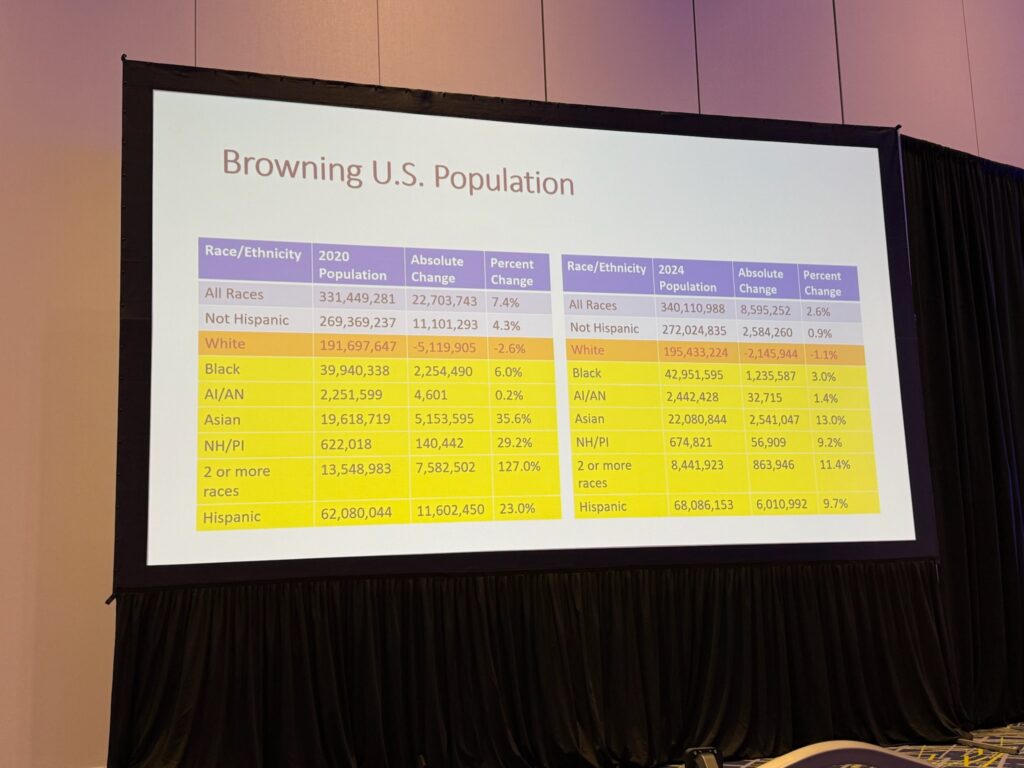The phrase, “The only constant is change,” couldn’t ring truer for 2025. Since January 21st, federal contractors have experienced unprecedented change that’s impacted the hiring landscape unlike any year before it, beginning with the Executive Order 14173, which rescinded the decades old Executive Order 11246. The newly enacted EO shifted the focus to a merit-based system and prohibited DEI programs seen as discriminatory. Fast forward to October’s annual SHRM event, formerly known as Inclusion, which was rebranded this year to Blueprint, where attendees would walk away with legally sound inclusion & diversity strategies. If you missed this two and half day event, here’s what your peers in employment law, talent acquisition and Culture and Belonging were talking about–all centered around a single question, “How do we build fair, compliant workplaces when the regulatory landscape keeps shifting?”
The Legal Ground Has Shifted
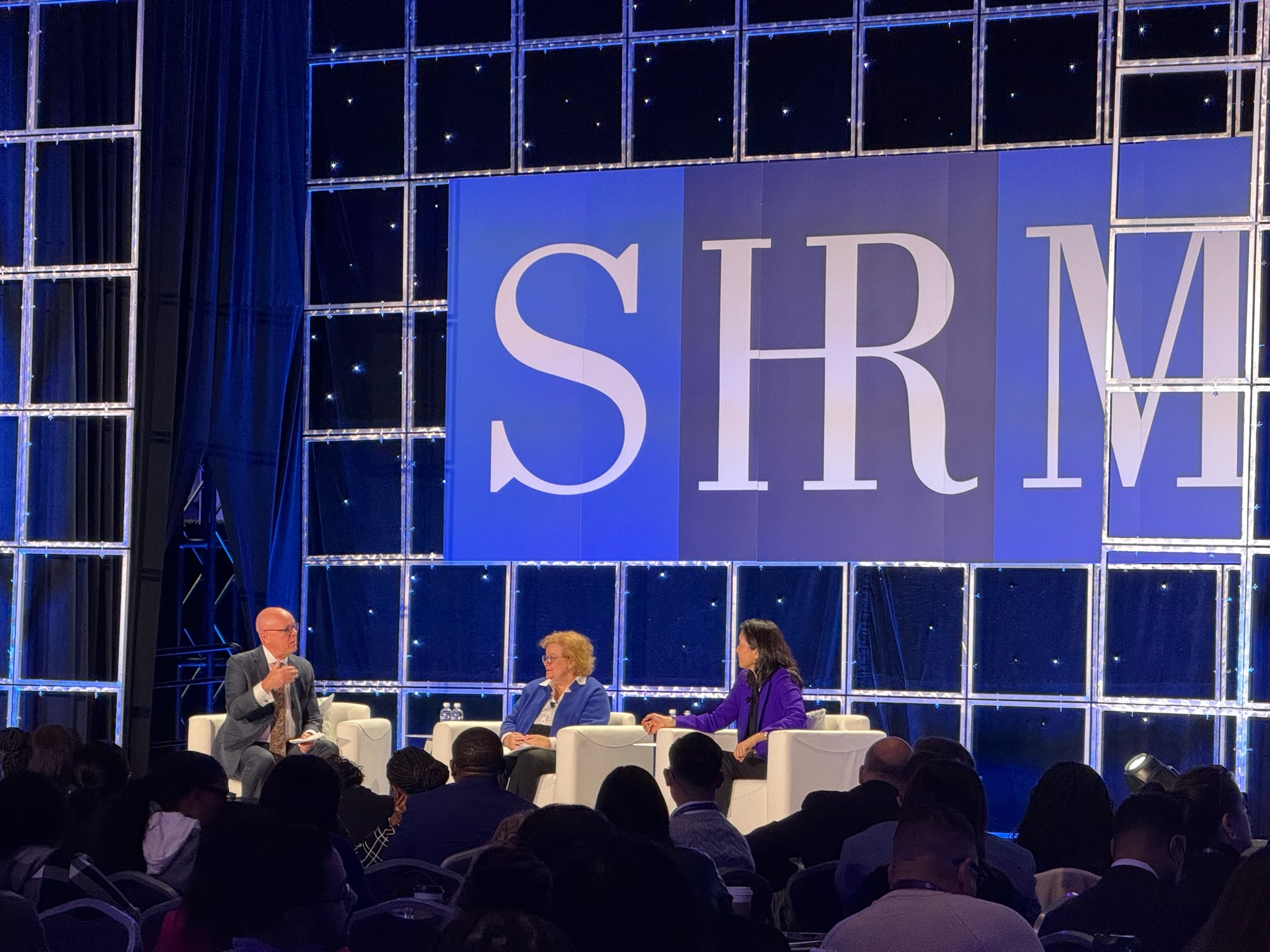
SHRM’s Jim Link moderates a panel discussion with Victoria Lipnic and Jenny R. Yang at the Blueprint Conference
The opening plenary with Resolution Economics Partner Victoria Lipnic and former EEOC Chair Jenny Yang set the tone of the event. The OFCCP has undergone substantial changes, with rulemaking underway to remove affirmative action plan requirements for women and minorities. Section 503 and VEVRAA remain in place, and will certainly require more attention from federal contractors going forward with regard to the recruitment and retention of veterans and individuals with disabilities.
Yang emphasized that advancing fairness and equal opportunity remains both legal and essential. “This is the work of the 21st century workplace,” she noted. The message for talent acquisition professionals: the fundamentals of non-discrimination haven’t changed, even as enforcement priorities have.
What “Illegal DEI” Actually Means

McGuireWoods Partner Jack White takes the stage in a breakout session to share how to navigate inclusion within the compliance landscape at present.
Multiple sessions tackled what many HR leaders are asking: what counts as illegal DEI? Jack White, Partner at McGuireWoods, offered clarity. Programs cross into risky territory when they provide preference, exclude people, or confer benefits based on protected characteristics like race or sex.
The practical impact for recruiting: if your talent pipeline programs are open to all, they’re generally safe. If they’re restricted or create advantages for specific groups or communities, they need legal review.
ERGs Need Fresh Eyes & Consistent Oversight
Employee resource groups (ERGs) came up repeatedly throughout the event in both session content and audience questions, and the guidance was consistent across the board. ERGs are welcomed in the workplace when they’re open to everyone, receive equal funding, and serve as spaces for connection rather than pathways to promotion.
James Banks, the General Counsel and Chief Risk Officer at CAF America, outlined what legally sound ERGs look like in practice:
- Written charters with clear mission statements
- Open membership policies
- Annual reauthorization to confirm alignment with company goals
- No partisan political activity using company resources
- Leader training on harassment, discrimination, and privacy
- Equal funding and resources
- Metrics to measure the ERGs success
Data Collection Isn’t the Problem, How You Use It Is
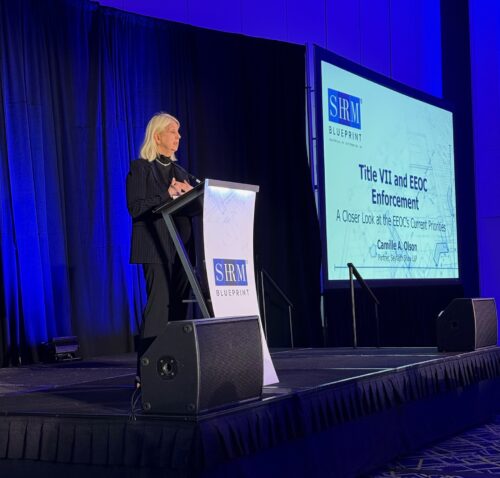
Seyfarth Shaw Partner Camille Olsen took the stage to discuss Title VII and EEOC enforcement priorities in the coming year.
If you’re working in HR right now, you know the compliance landscape feels like it’s shifting beneath your feet, and you’re not wrong. Camille Olsen from Seyfarth Shaw addressed a question many talent acquisition leaders are wrestling with: can we still track demographic data? The answer is yes, but…the current EEOC administration isn’t saying data collection is unlawful, moreover they’re concerned about how that data influences hiring decisions.
The recommendation: document in detail why you’re collecting specific data, what you’re using it for, and who has access. Keep demographic information with HR and legal teams, and not shared with hiring managers or business leaders.
Skills-Based Hiring Is Front and Center
The EEOC’s focus on “upskilling the workforce” and moving from degree-centered to skills-based hiring gives talent acquisition teams a clear path forward. This approach widens your talent pool without creating legal risk. It’s strategic workforce planning that also happens to support fairness.
The “Listening Across Lines” Conversation
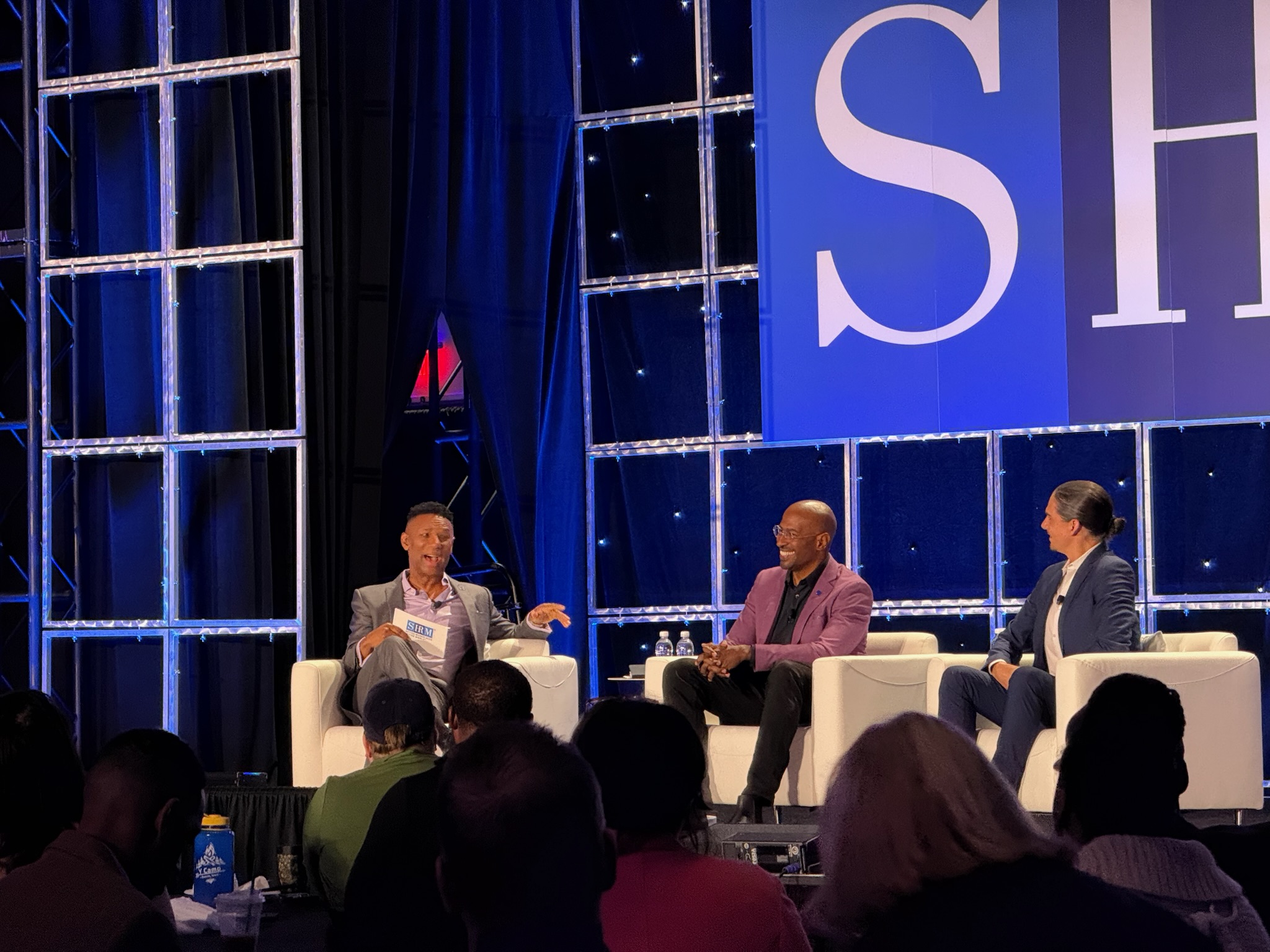
SHRM CEO Johnny C. Taylor moderates a conversation between Van Jones and The Robby Starbuck, encouraging the practice of civility and respect in turbulent times.
In an era where SHRM research identifies political differences as the top contributor to workplace incivility, the “Listening Across Lines” panel, and one of the more buzzed about sessions during the event, brought together three voices with starkly different perspectives to model the very civility they advocated for throughout the event. SHRM CEO Johnny C. Taylor moderated the panel, which included CNN’s Van Jones and The Heritage Foundation’s Robby Starbuck, and found surprising common ground on a principle critical to talent acquisition and compliance teams: expanding access to opportunity while maintaining high standards. Jones captured the session’s central metaphor with his observation that he’s “Never seen a bird fly with only a left wing, nor only a right wing. You need both wings. When there’s respect and civility, we can fly together.” Starbuck, approaching from a different ideological vantage point, reinforced the compliance implications of this approach by emphasizing that “The most important thing you can do is protect the speech you abhor because it protects us all,” a reminder that consistent policy enforcement requires protecting diverse viewpoints. The panel agreed that workplace productivity suffers when offices become battlegrounds for political activism, with the SHRM perspective noting that “the more we start to approach work as work and not a hub for political activism or personal values outside of work, we’ll increase productivity.”
The practical takeaway for HR teams centers on what Jones called moving from “shame and blame” to “space and grace” focused on a framework with direct applications to both hiring practices and workplace policy enforcement. This means widening talent gates through skills-based hiring and targeted recruitment rather than lowering standards, while creating compliant systems with clear metrics and equal consequences for all employees. Jones urged professionals to remember that, “Diversity when managed well is a super power,” and introduced WorkBetterTogether.ai as one tool for maintaining workplace pulse checks without escalating tensions. For talent acquisition and compliance professionals navigating today’s charged environment, the session’s core principles (or Blueprint if you will) set by Taylor, “Discuss the undiscussable. Reserve judgment. Stay curious. Practice civility,” offer a roadmap for building high-performing teams that leverage diverse perspectives while maintaining the professional boundaries essential to legal compliance and organizational success.
For those unable to attend, you can watch the session playback on SHRM’s LinkedIn live.
Understanding the “Iceberg Demographics”
His “iceberg model” reminded attendees that visible diversity is just the surface. The hidden characteristics beneath, such as caregiving responsibilities, neurodiversity, socioeconomic background, and mental health experiences, are where real inclusionary work happens. Johnson’s advice: master people analytics and practice empathy. Understanding these hidden demographics helps you attract visible diversity without creating compliance risk.
Cohorts Designed for Connection
The theme of Blueprint was thoughtfully woven throughout the event, coming to life most meaningfully during the peer cohort sessions. Co-developed by DCI Consulting, these cohorts created a welcoming homebase where conference attendees were thoughtfully grouped into 30 small, facilitated circles of learning. Throughout the event, we gathered for five peer cohort sessions to not only reflect on what we were hearing, but to actively practice translating vision into impact through guided exercises in a comprehensive 64-page workbook. Together, we explored: Grounding in Purpose, Defining Priorities, Strategy Design, Governance and Accountability, and From Blueprint to Practices.
My cohort was nothing short of extraordinary. Cohort 11, facilitated by DCI’s Macy Cheeks, was filled with generous, thoughtful individuals who brought honesty, openness, and warmth from our very first moments together. What emerged across our sessions was a beautiful pattern of shared wisdom: each person modeled an unwavering curiosity, constantly asking questions that pushed our thinking deeper, sought genuine understanding, and invited authentic connection. We learned from one another that the most powerful tool we have is our willingness to stay curious, to lean into difficult questions, and to build bridges through genuine conversation.
The plenary and breakout content was heavy, and at times emotionally demanding, tackling topics that touched on our deepest professional and personal values. In the cohort setting, our facilitator held space with grace, offering time to breathe and process, and creating room for extended conversation on particularly challenging subjects. Because of this care, we all felt truly heard, acknowledged, and understood, not just as professionals, but as whole people committed to making meaningful change in our organizations and communities.
Practical Steps Forward
Across sessions, five actions came up repeatedly for talent acquisition, compliance, and Culture & Belonging teams:
- Audit your programs with legal counsel. Look specifically at whether anything provides preference or excludes people based on protected characteristics.
- Document everything. Your hiring decisions, data collection purposes, and program rationales all need clear documentation.
- Review your ERG structure. Ensure charters exist, membership is open, and activities stay within appropriate boundaries.
- Expand where you recruit, not who you prefer. Targeted recruitment that puts all candidates in the same evaluation pool is a solid strategy.
- Train for consistency. Make sure your hiring teams apply criteria the same way across all candidates.
The Future-Focused Bigger Picture
Overall SHRM’s Blueprint conference reinforced that compliance and inclusion aren’t opposing forces. As Yang stated during the opening session, “Equality is not a zero-sum game. It’s like air, there’s enough for us all.”
For talent acquisition and compliance professionals, the path forward means being deliberate about removing barriers while staying within legal bounds. It means using data to understand your workforce while protecting how that information is accessed. And it means building cultures where people can succeed based on merit, skills, and contributions rather than network or pedigree.
If 2025 has taught us anything, it’s that more changes are coming and it’s how you respond to those changes that will set the tone moving forward. The regulatory environment will keep evolving, but the fundamentals remain: recruit broadly, evaluate fairly, document thoroughly, and build workplaces where people can do their best work.
THIS COLUMN IS MEANT TO ASSIST IN A GENERAL UNDERSTANDING OF THE CURRENT LAW AND PRACTICE RELATING TO OFCCP. IT IS NOT TO BE REGARDED AS LEGAL ADVICE. COMPANIES OR INDIVIDUALS WITH PARTICULAR QUESTIONS SHOULD SEEK ADVICE OF COUNSEL.
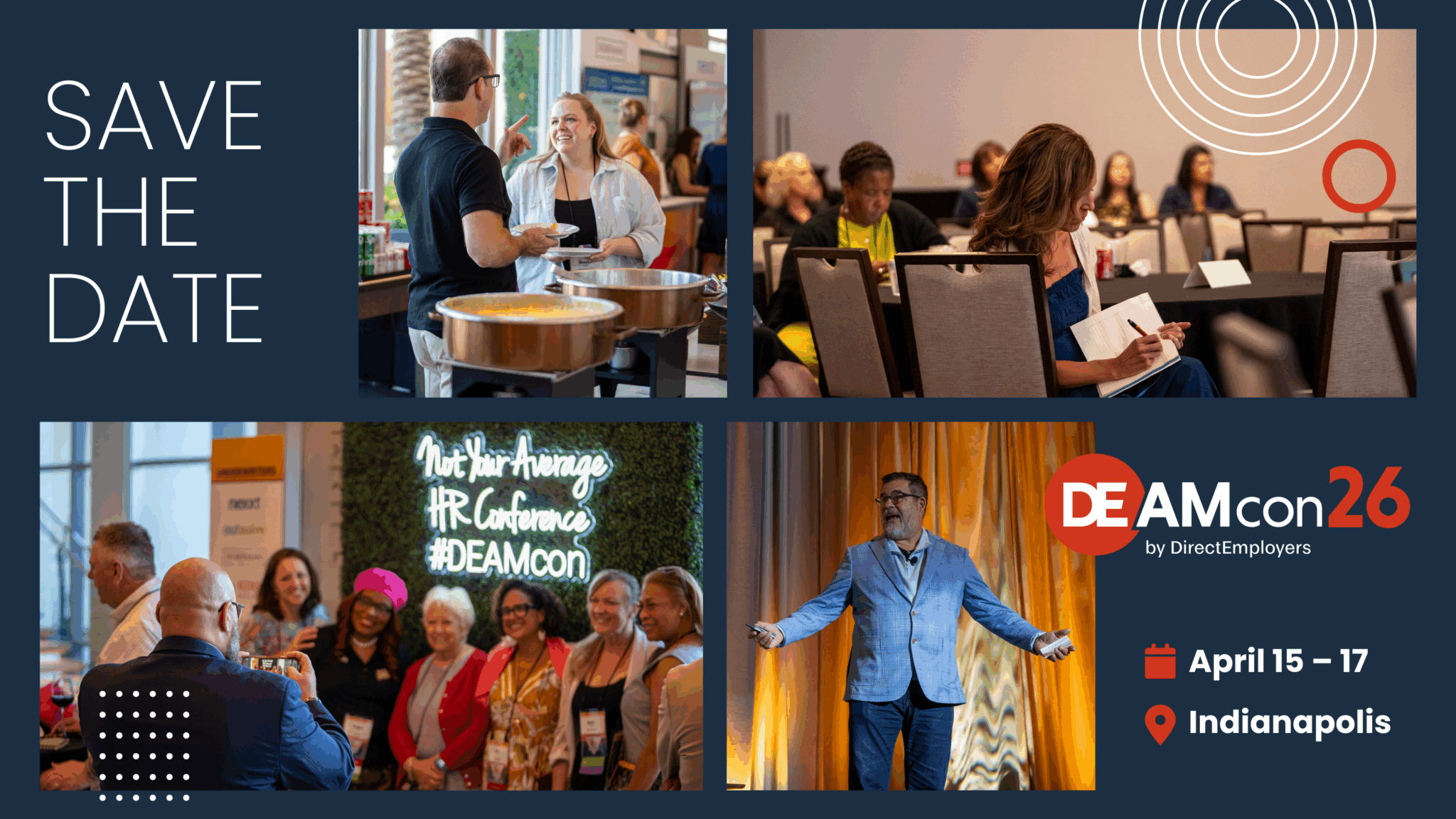
Don’t just keep up with change–lead it!
Join us at DEAMcon26, April 15-17, for our 25th anniversary and discover how to elevate your compliance, strengthen your recruitment strategies, and build the partnerships that drive results.
- Recapping SHRM Blueprint: Conversation, Cohorts & A Reminder to Stay Curious - November 3, 2025
- Federal Contractor Regulatory Review: 2025 Highlights from January’s EO 11246 Rescission to July’s NPRMs Affecting Section 503 & VEVRAA - August 18, 2025
- OFCCP to Begin Processing VEVRAA & Section 503 Components of Open Compliance Reviews or Complaint Investigations - July 7, 2025
